Exploring Factors Influencing Customer Buying Behavior in Business
VerifiedAdded on 2023/04/25
|9
|1379
|127
Essay
AI Summary
This essay provides an overview of customer buying behavior, emphasizing the impact of globalization and technology on increasing competition and customer choices. It examines social factors, noting customers' preference for personal research and services aligning with their needs and budgets, particularly targeting family decision-makers. The analysis extends to external factors, highlighting the intense competition in the Australian financial sector and the resulting customer brand-switching, which diminishes loyalty and profitability for organizations. Individual differences are also considered, with the bank tailoring services like home loans, personal loans, and commercial loans to meet diverse customer needs. The essay concludes with recommendations for ethical leadership, sustainable management, corporate social responsibility, and a triple bottom line approach to enhance customer satisfaction and organizational success in the competitive business landscape. Desklib offers this solution and many other resources to aid students in their studies.
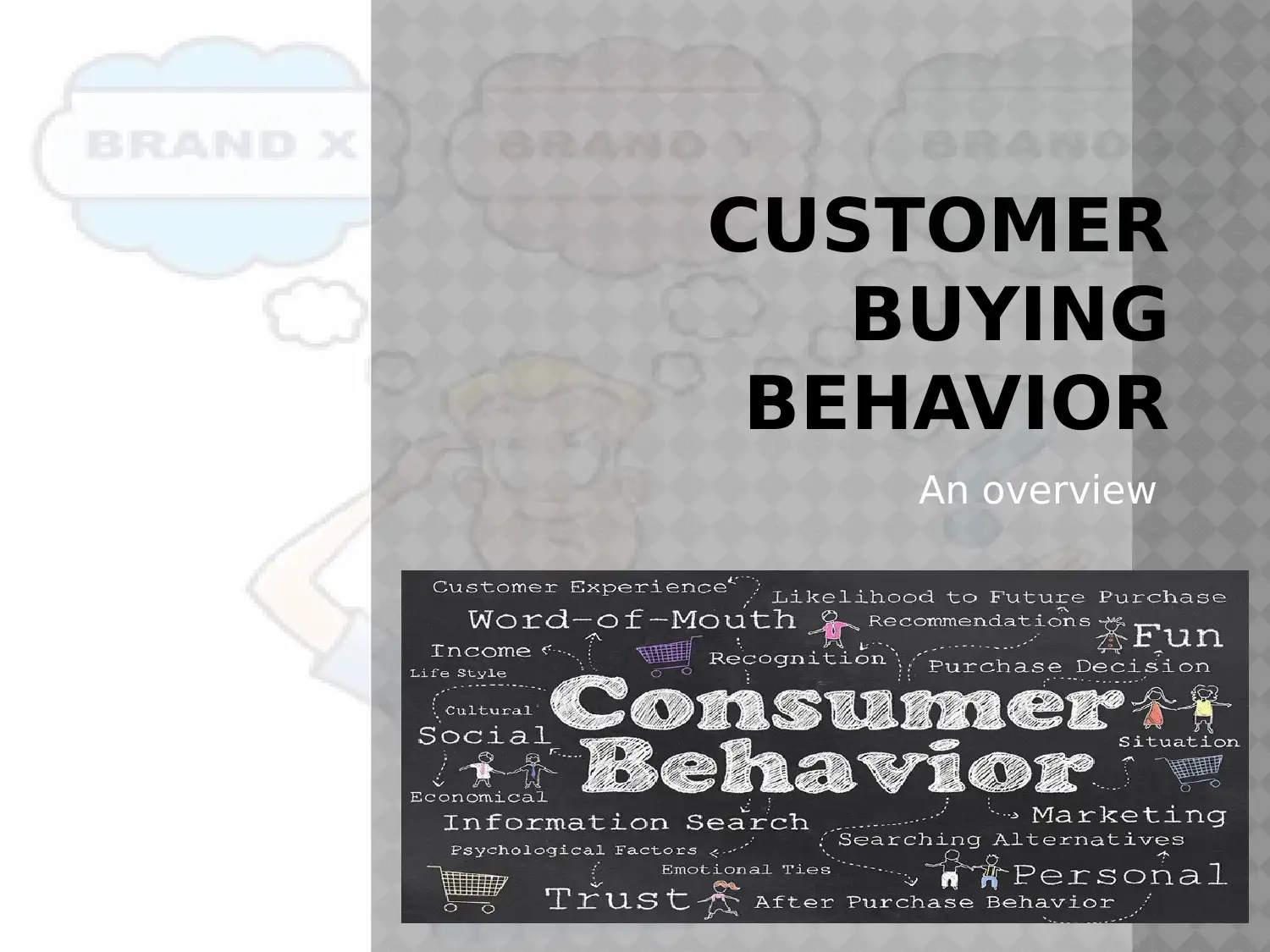
CUSTOMER
BUYING
BEHAVIOR
An overview
BUYING
BEHAVIOR
An overview
Paraphrase This Document
Need a fresh take? Get an instant paraphrase of this document with our AI Paraphraser

INTRODUCTION
The business world had
undergone a substantial amount
of change because of
globalization and the usage of
different kinds of technologies.
This had enhanced the level of
competition within the business
world and also the number of
options that are available to the
customers.
This in turn had changed the
buying behavior of the customers
The business world had
undergone a substantial amount
of change because of
globalization and the usage of
different kinds of technologies.
This had enhanced the level of
competition within the business
world and also the number of
options that are available to the
customers.
This in turn had changed the
buying behavior of the customers
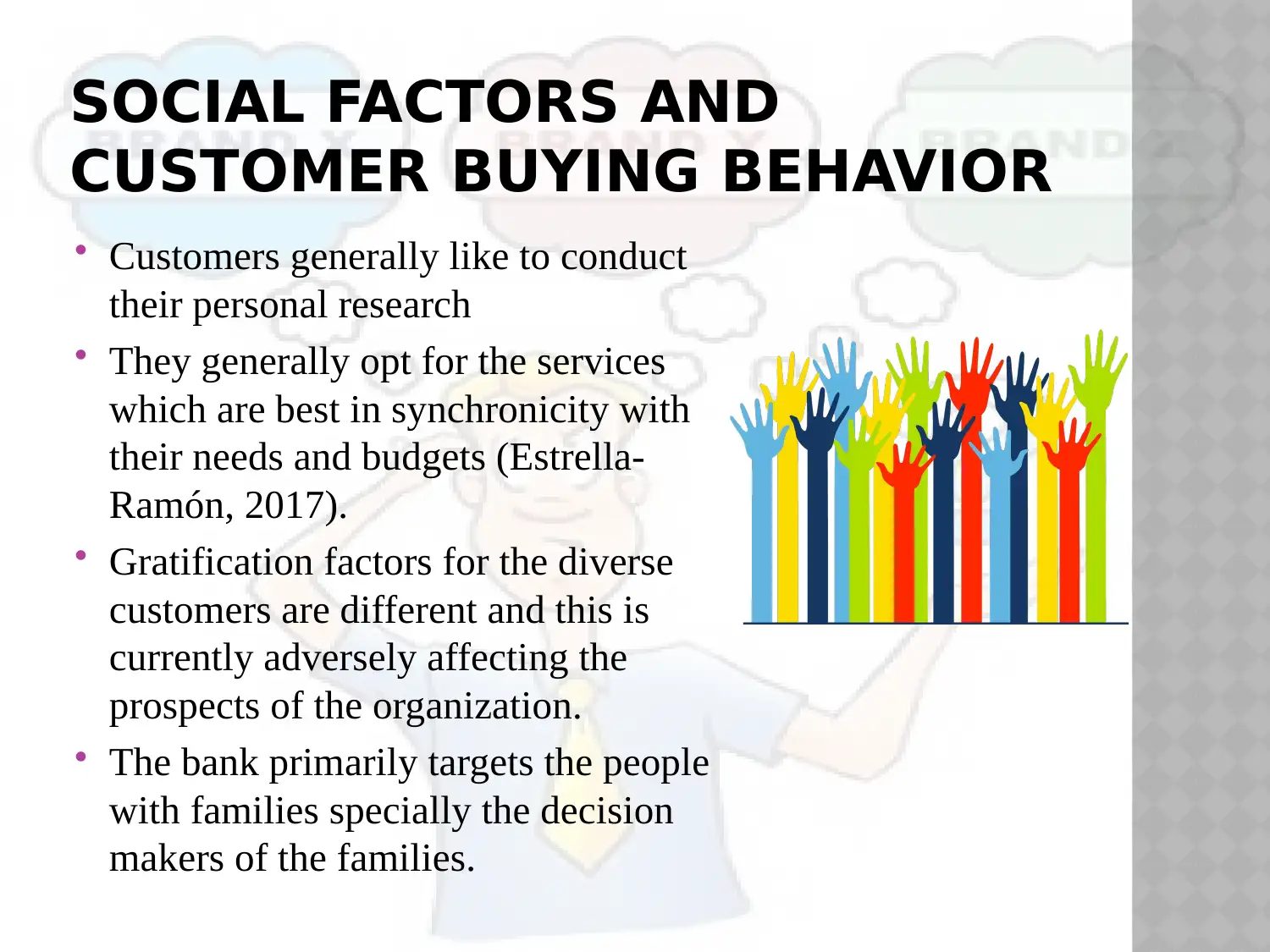
SOCIAL FACTORS AND
CUSTOMER BUYING BEHAVIOR
Customers generally like to conduct
their personal research
They generally opt for the services
which are best in synchronicity with
their needs and budgets (Estrella-
Ramón, 2017).
Gratification factors for the diverse
customers are different and this is
currently adversely affecting the
prospects of the organization.
The bank primarily targets the people
with families specially the decision
makers of the families.
CUSTOMER BUYING BEHAVIOR
Customers generally like to conduct
their personal research
They generally opt for the services
which are best in synchronicity with
their needs and budgets (Estrella-
Ramón, 2017).
Gratification factors for the diverse
customers are different and this is
currently adversely affecting the
prospects of the organization.
The bank primarily targets the people
with families specially the decision
makers of the families.
⊘ This is a preview!⊘
Do you want full access?
Subscribe today to unlock all pages.

Trusted by 1+ million students worldwide
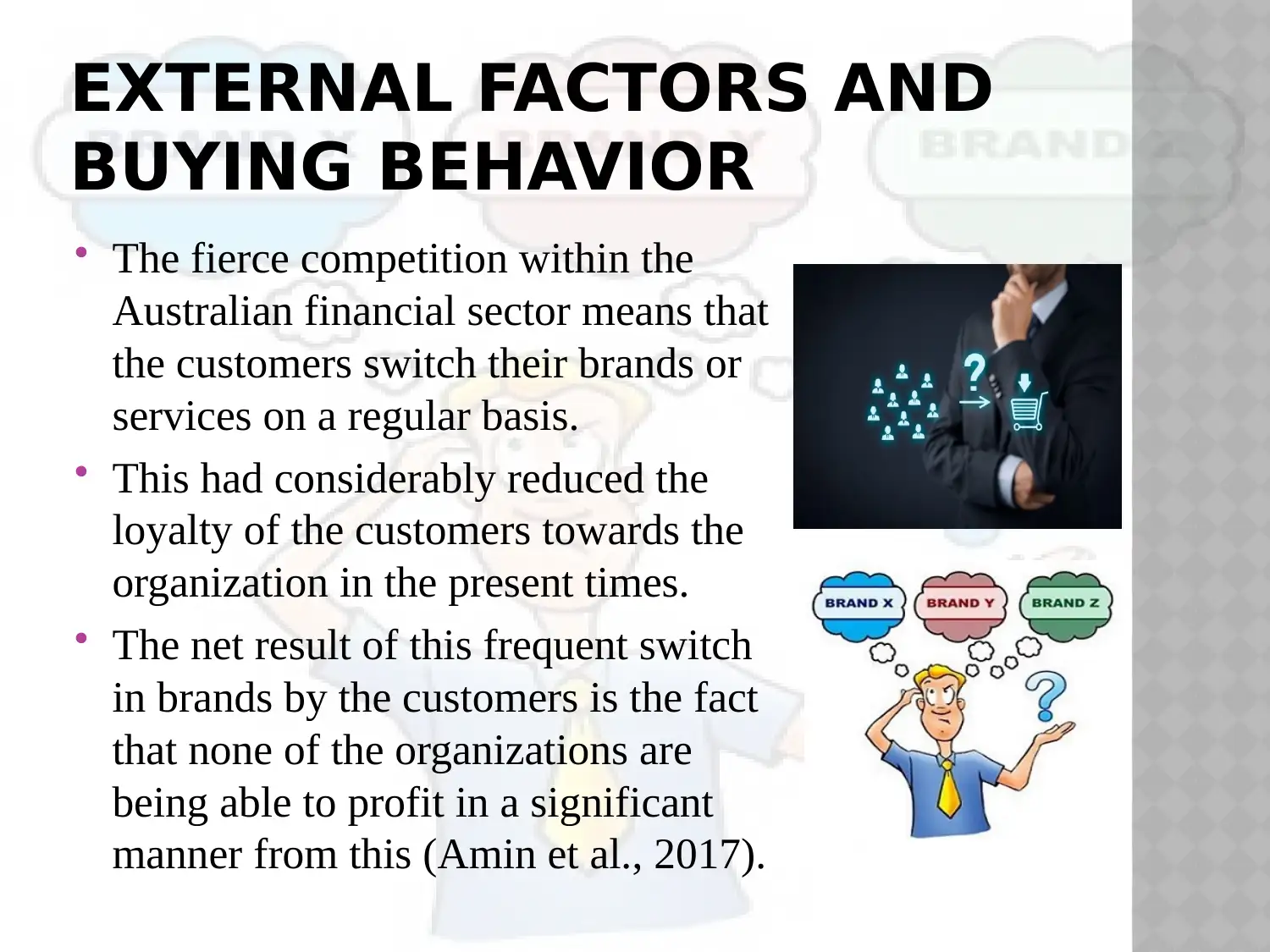
EXTERNAL FACTORS AND
BUYING BEHAVIOR
The fierce competition within the
Australian financial sector means that
the customers switch their brands or
services on a regular basis.
This had considerably reduced the
loyalty of the customers towards the
organization in the present times.
The net result of this frequent switch
in brands by the customers is the fact
that none of the organizations are
being able to profit in a significant
manner from this (Amin et al., 2017).
BUYING BEHAVIOR
The fierce competition within the
Australian financial sector means that
the customers switch their brands or
services on a regular basis.
This had considerably reduced the
loyalty of the customers towards the
organization in the present times.
The net result of this frequent switch
in brands by the customers is the fact
that none of the organizations are
being able to profit in a significant
manner from this (Amin et al., 2017).
Paraphrase This Document
Need a fresh take? Get an instant paraphrase of this document with our AI Paraphraser
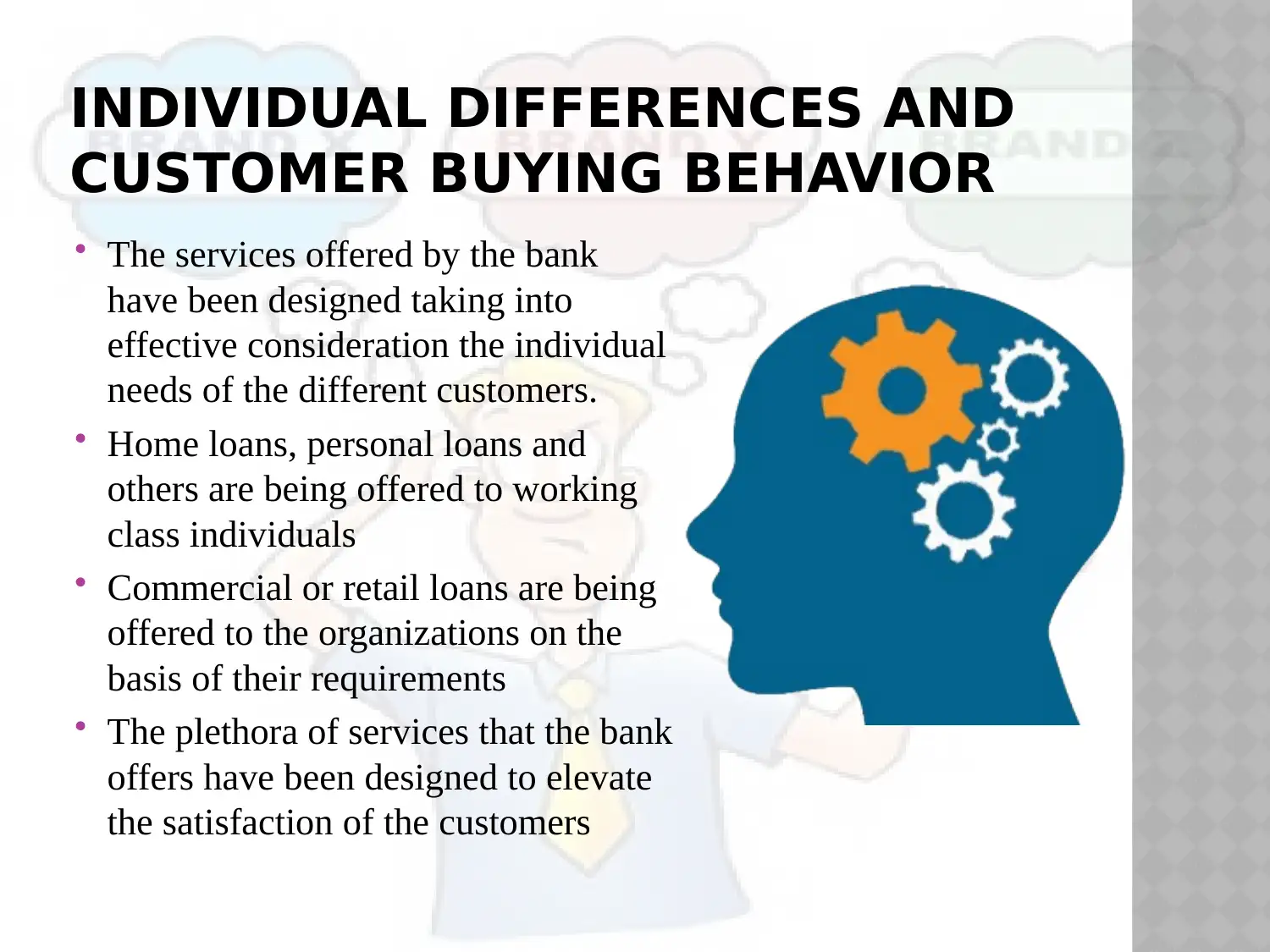
INDIVIDUAL DIFFERENCES AND
CUSTOMER BUYING BEHAVIOR
The services offered by the bank
have been designed taking into
effective consideration the individual
needs of the different customers.
Home loans, personal loans and
others are being offered to working
class individuals
Commercial or retail loans are being
offered to the organizations on the
basis of their requirements
The plethora of services that the bank
offers have been designed to elevate
the satisfaction of the customers
CUSTOMER BUYING BEHAVIOR
The services offered by the bank
have been designed taking into
effective consideration the individual
needs of the different customers.
Home loans, personal loans and
others are being offered to working
class individuals
Commercial or retail loans are being
offered to the organizations on the
basis of their requirements
The plethora of services that the bank
offers have been designed to elevate
the satisfaction of the customers
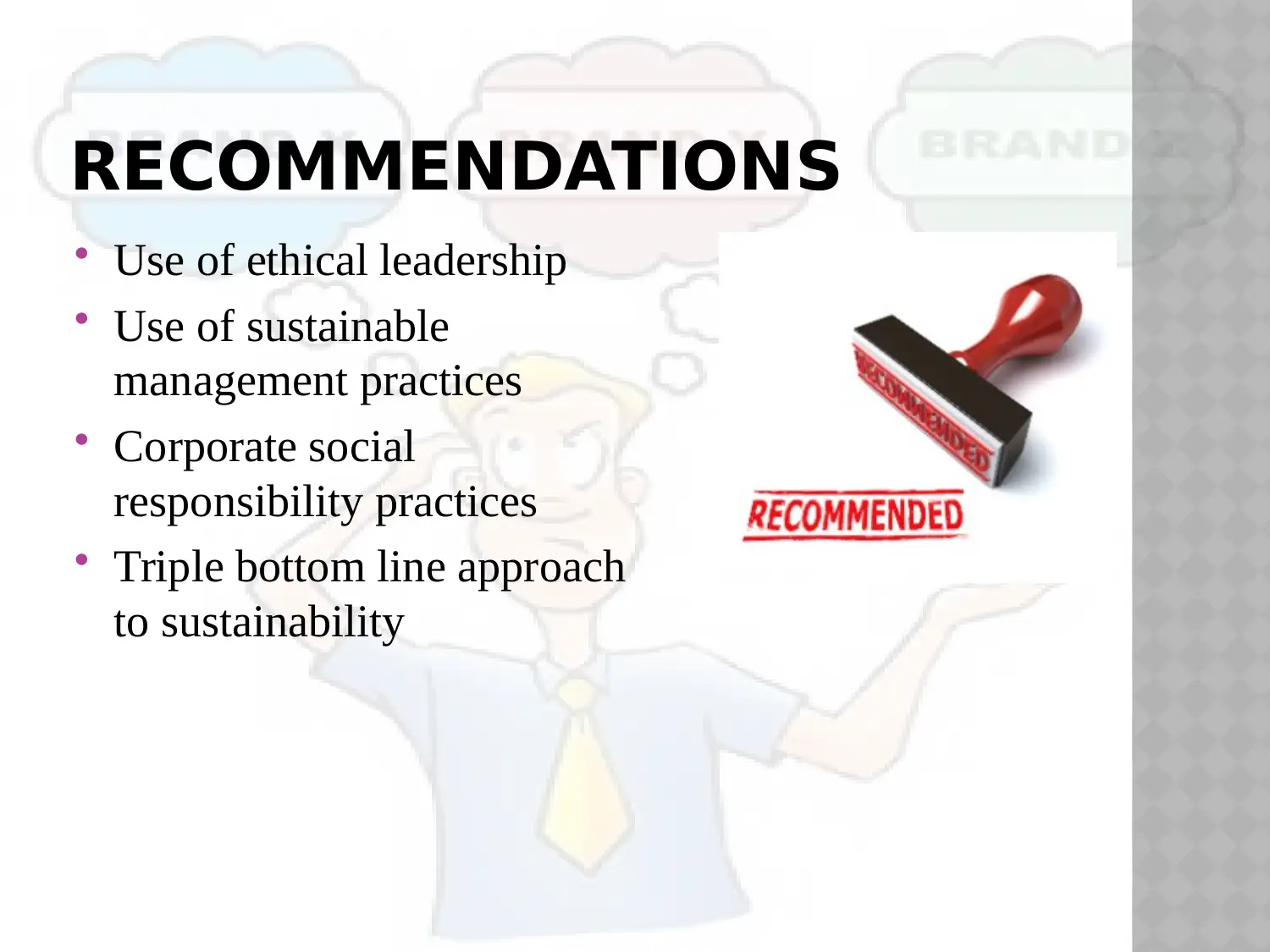
RECOMMENDATIONS
Use of ethical leadership
Use of sustainable
management practices
Corporate social
responsibility practices
Triple bottom line approach
to sustainability
Use of ethical leadership
Use of sustainable
management practices
Corporate social
responsibility practices
Triple bottom line approach
to sustainability
⊘ This is a preview!⊘
Do you want full access?
Subscribe today to unlock all pages.

Trusted by 1+ million students worldwide
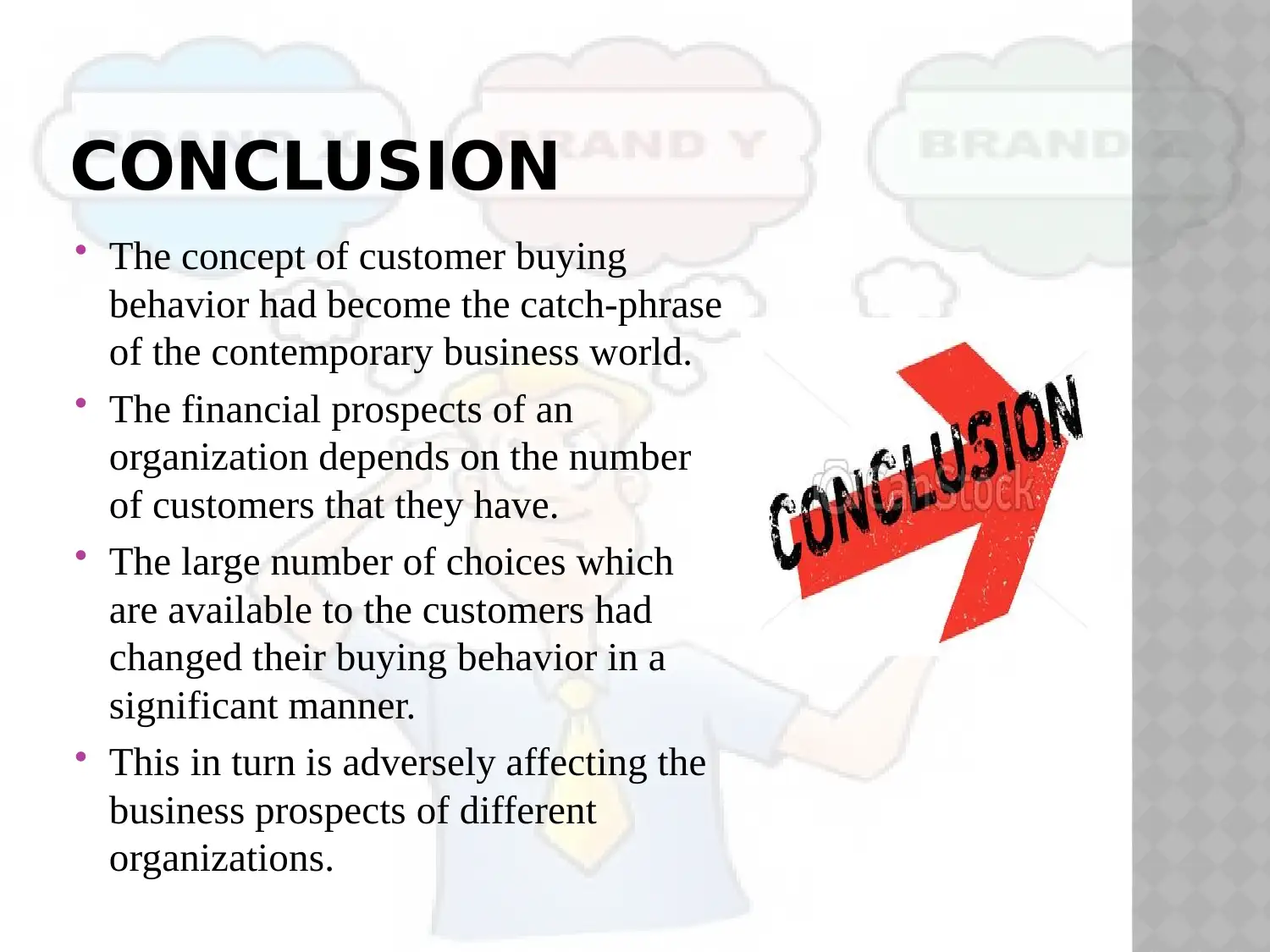
CONCLUSION
The concept of customer buying
behavior had become the catch-phrase
of the contemporary business world.
The financial prospects of an
organization depends on the number
of customers that they have.
The large number of choices which
are available to the customers had
changed their buying behavior in a
significant manner.
This in turn is adversely affecting the
business prospects of different
organizations.
The concept of customer buying
behavior had become the catch-phrase
of the contemporary business world.
The financial prospects of an
organization depends on the number
of customers that they have.
The large number of choices which
are available to the customers had
changed their buying behavior in a
significant manner.
This in turn is adversely affecting the
business prospects of different
organizations.
Paraphrase This Document
Need a fresh take? Get an instant paraphrase of this document with our AI Paraphraser

REFERENCES
Abdeen, A., Rajah, E., & Gaur, S. S. (2016). Consumers' beliefs about firm’s CSR initiatives and their purchase behaviour. Marketing Intelligence & Planning, 34(1),
2-18.
Alshurideh, M. T. (2016). Is customer retention beneficial for customers: A conceptual background. Journal of Research in Marketing, 5(3), 382-389.
Amin, H., Abdul Rahman, A. R., Abdul Razak, D., & Rizal, H. (2017). Consumer attitude and preference in the Islamic mortgage sector: a study of Malaysian
consumers. Management Research Review, 40(1), 95-115.
Armour, J., Awrey, D., Davies, P. L., Enriques, L., Gordon, J. N., Mayer, C. P., & Payne, J. (2016). Principles of financial regulation. Oxford University Press.
Berbegal-Mirabent, J., Mas-Machuca, M., & Marimon, F. (2016). Antecedents of online purchasing behaviour in the tourism sector. Industrial Management & Data
Systems, 116(1), 87-102.
Commbank.com.au, (2019). Personal banking including accounts, credit cards and home loans - CommBank. Retrieved from https://www.commbank.com.au
Estrella-Ramón, A. (2017). Explaining customers’ financial service choice with loyalty and cross-buying behaviour. Journal of Services Marketing, 31(6), 539-555.
Fatma, M., Rahman, Z., & Khan, I. (2015). The role of CSR as a determinant of consumer responses in financial sector. Decision, 42(4), 393-401.
Hjort, K., Lantz, B., Ericsson, D., & Gattorna, J. (2016). Customer Segmentation Based on Buying and Returning Behaviour: Supporting Differentiated Service
Delivery in Fashion E-Commerce. In Developments in Logistics and Supply Chain Management (pp. 153-169). Palgrave Macmillan, London.
Kaihatu, T. S., & Spence, M. T. (2016). The relationship between shopping mall image and congruity on customer behaviour: Evidence from Indonesia. Australasian
Marketing Journal (AMJ), 24(2), 141-145.
Küster, I., Vila, N., & Canales, P. (2016). How does the online service level influence consumers’ purchase intentions before a transaction? A formative
approach. European journal of management and business economics, 25(3), 111-120.
Matthews, A. (2016). The financial services industry: Whistleblowing and calls for a royal commission. Precedent (Sydney, NSW), (136), 35.
McIlroy, J. (2018). Royal commission hears bankers' took bribes'. Green Left Weekly, (1173), 8.
Noori, B. (2015). An Analysis of Mobile Banking User Behavior Using Customer Segmentation. International Journal of Global Business, 8(2).
O'Connor, B. (2018). Aftermath of the royal commission. Newsmonth, 38(8), 15.
Ozuem, W., Howell, K. E., & Lancaster, G. (2016). Understanding technologically-induced customer services in the Nigerian banking sector: the internet as a post-
modern phenomenon. International Journal of Information Technology and Management , 15(3), 272-290.
Pappas, N. (2016). Marketing strategies, perceived risks, and consumer trust in online buying behaviour. Journal of Retailing and Consumer Services, 29, 92-103.
Paulssen, M., & Roulet, R. (2017). Social bonding as a determinant of share of wallet and cross-buying behaviour in B2B relationships. European Journal of
Marketing, 51(5/6), 1011-1028.
Pearson, S. (2016). Building brands directly: creating business value from customer relationships . Springer.
Pilbeam, K. (2018). Finance & financial markets. Macmillan International Higher Education.
Ramanathan, U., Subramanian, N., & Parrott, G. (2017). Role of social media in retail network operations and marketing to enhance customer
satisfaction. International Journal of Operations & Production Management, 37(1), 105-123.
Ramanathan, U., Subramanian, N., Yu, W., & Vijaygopal, R. (2017). Impact of customer loyalty and service operations on customer behaviour and firm
performance: empirical evidence from UK retail sector. Production Planning & Control, 28(6-8), 478-488.
Tung, B., & Carlson, J. (2015). Examining determinants of cross buying behaviour in retail banking. International Journal of Quality & Reliability
Management, 32(8), 863-880.
Wali, A. F., Wright, L. T., & Uduma, I. A. (2015). Customer relationship management for brand commitment and brand loyalty. British Journal of Marketing
Studies, 3(4), 45-58.
Yusof, J. M., Manan, H. A., Karim, N. A., & Kassim, N. A. M. (2015). Customer's Loyalty effects of CSR Initiatives. Procedia-Social and Behavioral Sciences, 170, 109-
119.
Abdeen, A., Rajah, E., & Gaur, S. S. (2016). Consumers' beliefs about firm’s CSR initiatives and their purchase behaviour. Marketing Intelligence & Planning, 34(1),
2-18.
Alshurideh, M. T. (2016). Is customer retention beneficial for customers: A conceptual background. Journal of Research in Marketing, 5(3), 382-389.
Amin, H., Abdul Rahman, A. R., Abdul Razak, D., & Rizal, H. (2017). Consumer attitude and preference in the Islamic mortgage sector: a study of Malaysian
consumers. Management Research Review, 40(1), 95-115.
Armour, J., Awrey, D., Davies, P. L., Enriques, L., Gordon, J. N., Mayer, C. P., & Payne, J. (2016). Principles of financial regulation. Oxford University Press.
Berbegal-Mirabent, J., Mas-Machuca, M., & Marimon, F. (2016). Antecedents of online purchasing behaviour in the tourism sector. Industrial Management & Data
Systems, 116(1), 87-102.
Commbank.com.au, (2019). Personal banking including accounts, credit cards and home loans - CommBank. Retrieved from https://www.commbank.com.au
Estrella-Ramón, A. (2017). Explaining customers’ financial service choice with loyalty and cross-buying behaviour. Journal of Services Marketing, 31(6), 539-555.
Fatma, M., Rahman, Z., & Khan, I. (2015). The role of CSR as a determinant of consumer responses in financial sector. Decision, 42(4), 393-401.
Hjort, K., Lantz, B., Ericsson, D., & Gattorna, J. (2016). Customer Segmentation Based on Buying and Returning Behaviour: Supporting Differentiated Service
Delivery in Fashion E-Commerce. In Developments in Logistics and Supply Chain Management (pp. 153-169). Palgrave Macmillan, London.
Kaihatu, T. S., & Spence, M. T. (2016). The relationship between shopping mall image and congruity on customer behaviour: Evidence from Indonesia. Australasian
Marketing Journal (AMJ), 24(2), 141-145.
Küster, I., Vila, N., & Canales, P. (2016). How does the online service level influence consumers’ purchase intentions before a transaction? A formative
approach. European journal of management and business economics, 25(3), 111-120.
Matthews, A. (2016). The financial services industry: Whistleblowing and calls for a royal commission. Precedent (Sydney, NSW), (136), 35.
McIlroy, J. (2018). Royal commission hears bankers' took bribes'. Green Left Weekly, (1173), 8.
Noori, B. (2015). An Analysis of Mobile Banking User Behavior Using Customer Segmentation. International Journal of Global Business, 8(2).
O'Connor, B. (2018). Aftermath of the royal commission. Newsmonth, 38(8), 15.
Ozuem, W., Howell, K. E., & Lancaster, G. (2016). Understanding technologically-induced customer services in the Nigerian banking sector: the internet as a post-
modern phenomenon. International Journal of Information Technology and Management , 15(3), 272-290.
Pappas, N. (2016). Marketing strategies, perceived risks, and consumer trust in online buying behaviour. Journal of Retailing and Consumer Services, 29, 92-103.
Paulssen, M., & Roulet, R. (2017). Social bonding as a determinant of share of wallet and cross-buying behaviour in B2B relationships. European Journal of
Marketing, 51(5/6), 1011-1028.
Pearson, S. (2016). Building brands directly: creating business value from customer relationships . Springer.
Pilbeam, K. (2018). Finance & financial markets. Macmillan International Higher Education.
Ramanathan, U., Subramanian, N., & Parrott, G. (2017). Role of social media in retail network operations and marketing to enhance customer
satisfaction. International Journal of Operations & Production Management, 37(1), 105-123.
Ramanathan, U., Subramanian, N., Yu, W., & Vijaygopal, R. (2017). Impact of customer loyalty and service operations on customer behaviour and firm
performance: empirical evidence from UK retail sector. Production Planning & Control, 28(6-8), 478-488.
Tung, B., & Carlson, J. (2015). Examining determinants of cross buying behaviour in retail banking. International Journal of Quality & Reliability
Management, 32(8), 863-880.
Wali, A. F., Wright, L. T., & Uduma, I. A. (2015). Customer relationship management for brand commitment and brand loyalty. British Journal of Marketing
Studies, 3(4), 45-58.
Yusof, J. M., Manan, H. A., Karim, N. A., & Kassim, N. A. M. (2015). Customer's Loyalty effects of CSR Initiatives. Procedia-Social and Behavioral Sciences, 170, 109-
119.

⊘ This is a preview!⊘
Do you want full access?
Subscribe today to unlock all pages.

Trusted by 1+ million students worldwide
1 out of 9
Related Documents
Your All-in-One AI-Powered Toolkit for Academic Success.
+13062052269
info@desklib.com
Available 24*7 on WhatsApp / Email
![[object Object]](/_next/static/media/star-bottom.7253800d.svg)
Unlock your academic potential
Copyright © 2020–2025 A2Z Services. All Rights Reserved. Developed and managed by ZUCOL.





